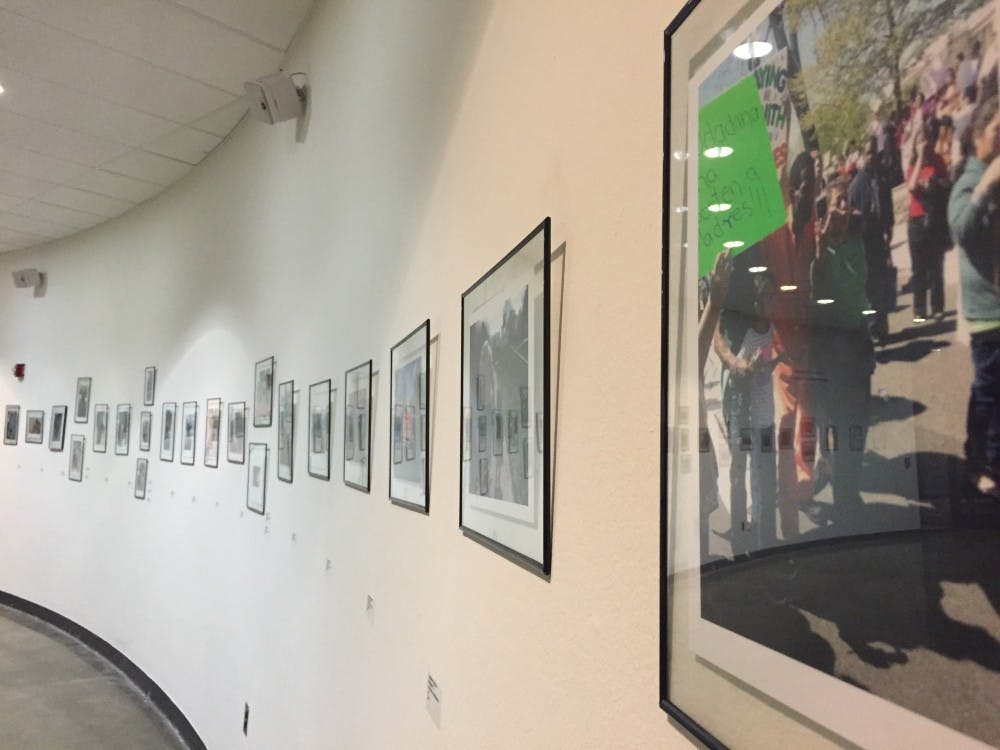A recent exhibit in the Katzen Arts Center offered a unique perspective on the lives of day laborers in the District.
AU students in one upper-level Spanish course collaborated with Workers United of Washington, D.C. (Trabajadores Unidos de Washington, D.C.), which educates low-wage workers on their rights and helps them organized leadership to defend their rights in the workplace. The collaboration is part of a two-semester project focusing on exploring the lives of day laborers, Professor Ludy Grandas said.
The result is a collection of photographs taken by the day laborers over the course of their day, documenting their routines, moments other people would rarely see.
The idea for the exhibit came from Arturo Griffiths, the president of Workers United of Washington, D.C. Griffiths is a community organizer who has been working to protect the rights of day laborers for the past four years. These workers go everyday to the only Home Depot in northeast D.C. to find work, and Griffiths “wanted the day laborers to actively participate in advocating for their cause through artistic expression,” he said in an email.
Grandas suggested a photo exhibit featuring photos taken by the day laborers themselves.
The day laborers used their cellphones to photograph their daily routines, including where they walked, the “corner where they spend most of their days,” and what they did after-hours or on days off, according to an email from Grandas.
The result is a collection of images that not only document the everyday lives of people, but helps viewers see a side of these everyday lives that are rarely seen.
“This photo exhibit explores how day-workers live their daily lives in their homes, on the streets protesting and on the job,” School of International Service senior Isabella Merritt said in an email. “This photo exhibit is important because it goes beyond what is normally seen in the media regarding immigrants.”
Merritt is in the class “Hispanics in the United States,” which was involved with the exhibit. The students wrote captions for the photos and also helped to choose which photos would be featured in the exhibit.
“Before this exhibit I knew nothing about the issues of day-workers. It was difficult to hear that these workers have to leave their families behind to live in poor conditions with no job stability,” Merritt said. According to the Workers United of Washington, D.C. website, most workers are unaware of their rights and therefore can be taken advantage of by employers, such as not receiving minimum wage.
A group of day laborers came to AU on four different occasions to meet with students, Grandas said.
“The experience has been enriching to us all,” she said. “They have shared their photographs, their migration experience, and other details about their families and the kind of work they do.”
Photojournalist and AU professor Bill Gentile helped the class select the photos that would be exhibited. Chip Gerfen, chair of the World Languages and Cultures Department, and Zoe Charlton, chair of the Department of Art, also provided assistance and feedback for the project from the beginning.
“After talking with the day-laborers I heard the hope within their voices even after all the obstacles they have faced,” Merritt said. “Their story is important and should be heard because it shows how ineffective our immigration system is when it comes to support.”
news@theeagleonline.com





